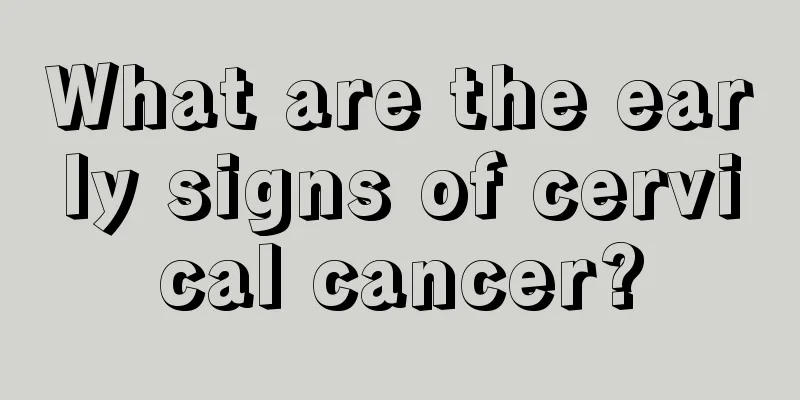Will there be bleeding after a hysterectomy?

|
Patients with uterine tumors, uterine dysfunction, ovarian tumors, fallopian tube tumors, uterine protrusion, rupture, prolapse, etc. all need to have a hysterectomy. Symptoms of bleeding after hysterectomy are likely caused by infection, so it is important to take it seriously and take relevant medications after the operation as required by the doctor. Indications 1. Benign uterine tumors: For example, uterine fibroids are larger than the uterus at 12 weeks of pregnancy; or uterine fibroids are smaller than the uterus at 12 weeks of pregnancy, but there is heavy uterine bleeding and drug treatment is ineffective. 2. Uterine malignant tumors: such as cervical cancer, endometrial cancer, uterine sarcoma, uterine choriocarcinoma, etc. 3. Severe dysfunctional uterine bleeding that fails to respond to conservative treatment. 4. Patients with atypical endometrial hyperplasia, adenomyosis, endometriosis, etc., for whom drug treatment is ineffective. 5. Malignant tumor of ovary or fallopian tube. 6. Patients with uterine prolapse, uterine inversion, uterine rupture, etc. who do not need or cannot keep the uterus. Contraindications 1. Contraindications to surgery due to systemic diseases, such as dysfunction of important organs such as the heart, liver, and kidney. 2. If the uterus is too large and the pregnancy lasts for more than 20 weeks, careful consideration should be given. Surgical method 1. Total vaginal hysterectomy Suitable for surgical treatment of uterine inversion. It is suitable for patients with local infection or tissue necrosis in the inverted uterus; patients with long-term inversion, edema and thickening of the inverted uterine body, difficulty in recovery, and older age; and patients with inverted uterus and concurrent submucosal uterine fibroids. The difference from vaginal subtotal hysterectomy is that the incision on the posterior wall of the uterus reaches the posterior fornix of the vagina and the cervix is not preserved. 2. Vaginal subtotal hysterectomy It is suitable for patients with local infection or tissue necrosis in the inverted uterus; patients with long-term inversion, edema and thickening of the inverted uterine body, difficulty in recovery, and older age; and patients with inverted uterus and concurrent submucosal uterine fibroids. 3. Radical hysterectomy It is the basic surgical procedure for the treatment of cervical cancer. The key is to completely remove the regional lymph nodes and perform an extensive total hysterectomy, removing the parauterine, paracervical, paravaginal and proximal vaginal tissues. 4. Abdominal subtotal hysterectomy It is a commonly used surgical procedure for benign uterine lesions. Subtotal hysterectomy preserves a healthy cervix and retains the cervix's role in regulating the body's endocrine system. The cervix can still secrete mucus after surgery, the vaginal length remains unchanged, and there is no vaginal scar after cervical removal, which is beneficial to women's physical and mental health after surgery. 5. Abdominal or laparoscopic hysterectomy It is the most commonly used procedure. It is mostly used to remove uterine tumors, certain uterine bleeding and adnexal lesions, etc. During surgery, care must be taken not to damage the ureter and to minimize blood loss. |
<<: Will I bleed after a hysterectomy?
>>: What are the precautions for mastectomy?
Recommend
What are the nutritional components of shiitake mushrooms? How to preserve fresh shiitake mushrooms
Shiitake mushrooms are a famous edible fungus in ...
What are the harms of eating frozen pears to the body (generally no harm if eaten in moderation)
...
What should women do if they have long leg hair?
There are significant differences between women&#...
Can pregnant women eat jute leaves?
Today, the younger generation of young couples ar...
What medicine can I take for urticaria during lactation?
Urticaria is a common skin disease. If a woman su...
Causes of Candida infection in women
Many bacteria in nature can cause certain harm to...
Placenta accreta is most dangerous in a few months
There are many potential risks during pregnancy, ...
Care after hydatidiform mole abortion
I've been writing about miscarriage, so pleas...
How do pregnant women drink milk?
Mothers who have just given birth may not be in g...
Causes of right clavicle pain in women
Right clavicle pain is a symptom that cannot be i...
What does it mean when a woman dreams of eating a snake?
Snakes are very repugnant to many people. They ar...
How to guide breastfeeding?
Many women may breastfeed after giving birth. Thi...
Should women have external hemorrhoids removed?
Hemorrhoids are a common anorectal disease. There...
It hurts every time I pee after sex
Everyone has sexual needs, which is very normal. ...
Can girls cut their pubic hair?
Every one of us ladies has pubic hair, but many l...









